In the last two centuries, the Eastern European and Slavic cultural influences in Western music have greatly helped shape modern musical literature. The early 20th century also saw composers in these same regions, from the Baltics to Siberia, expanding their musical tonalities and building upon the modern serialism of the Second Viennese School—Arnold Schoenberg, Anton Webern, and Alban Berg—by adding their own unique perspectives and approaches.
Harnessing a radiant legacy of excellence in the fine arts, Russian artists are no strangers to virtuosity. Their cultural tradition of intensive training, subsidized by the state, has produced some of the greatest contributors to the classical and romantic repertoire in the last two centuries—including Stravinsky, Rachmaninoff, Prokofiev, Scriabin, and Tchaikovsky.
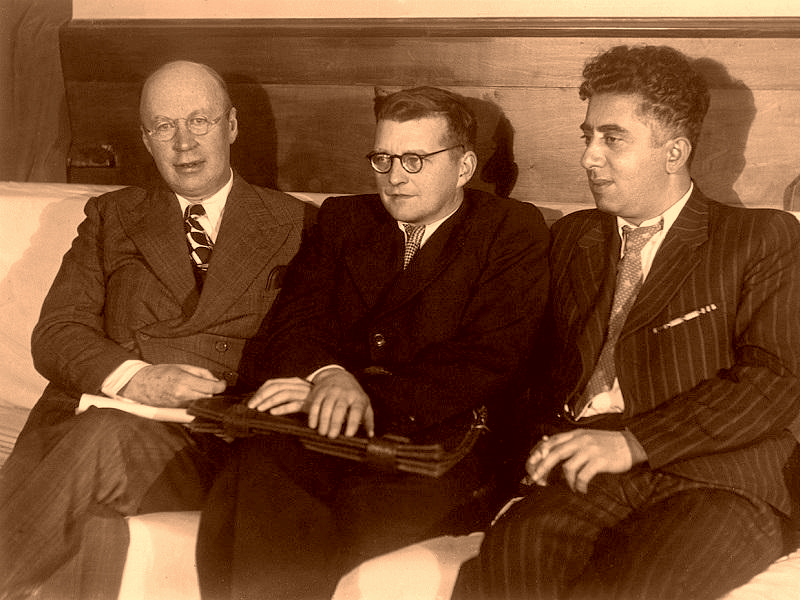
A common compositional element shared by many Russian and Slavic composers is the repurposing of traditional musical material, using the folk music of their respective cultures as source material for formal concert works. This "sampling" of vernacular traditions can be seen in the Polish-influenced Mazurkas of Frédéric Chopin, the dance fantasies in Stravinsky's Petrushka and The Rite Of Spring, Béla Bartók's Romanian folk music reimaginations like "String Quartet No. 3", and Aram Khatchaturian's famous "Sabre Dance," based around the folk music of his Armenian heritage.
This week, we are celebrating the life and work of one such artist—Dmitri Shostakovich. Emerging to become one of the most important Russian composers of the 20th century, Shostakovich was a product of both of these traditions: folk music repurposing and instrumental dexterity. He unleashed a prolific catalogue of distinctly Russian-influenced musical literature during his lifetime.
Using a myriad of musical techniques—particularity, playing with ideas of contrast—he was heavily influenced by the virtuosity of Mahler's late romanticism, Jewish song and folklore, as well as the neoclassical style of Stravinsky's early musical language. With one foot in the past and one foot in the future, Shostakovich, along with Sergei Prokofiev, would continue to push envelopes with their work in ways that didn't fit into easy categorization.
His expansive catalogue covers significant ground in the many genres of orchestral, chamber, and instrument solo formats. Including 21 symphonies, 20 works for chamber ensembles, every format imaginable for solo piano—sonatas, preludes, and fugues—three operas, several song cycles, ballets, and significant contributions in the world of film music, with scores like The Gadfly.
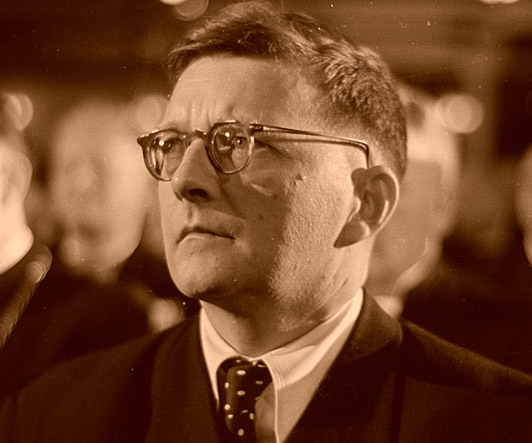
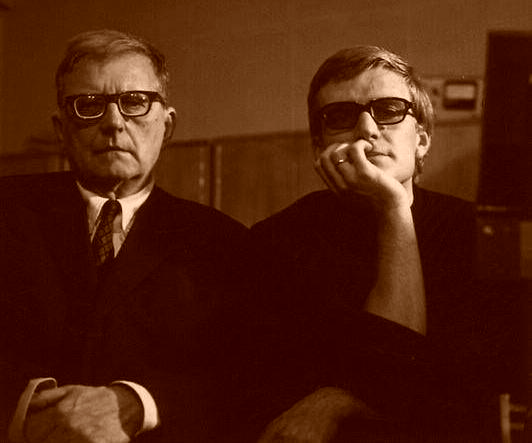
One of my all-time favorite works of Shostakovich—the second movement, Andante, from his Piano Concerto No. 2—has remained memorable to me for many years. Its simplicity and lyrical melodic gestures still resonate with me, and unlike the majority his work around this period, this particular movement of this piece is a warm, lush, atmospheric sonic poem of hope.
Shostakovich composed the Piano Concerto No. 2 In F Major, Op.102 in 1957 for his son, Maxim, in celebration of his son's graduation from the Moscow Conservatory. He presented it to his son on his 19th birthday. Maxim would then go on to premier it at the Conservatory.
It features thematic content based around parodies of Russian patriotic songs. The concerto reflects the joy of life, hope, and youth. This work fits into a cultural sub-genre of Soviet music, the "Youth Concerto." The "Youth Concerto" is an etude specifically designed for young players in Russia's subsidized pedagogic system, which looks to harvest the best virtuosity the Union has to offer.
The Andante movement begins with strings in a sarabande-like rhythmic motion. This metric device is then contrasted by the vividly lyrical melodic expressions of the concerto for piano solo. An effective use of limited resources, this illustrative movement features an orchestration almost identical to that of a standard piano quintet, with the additions of contrabass and a brief French horn appearance.
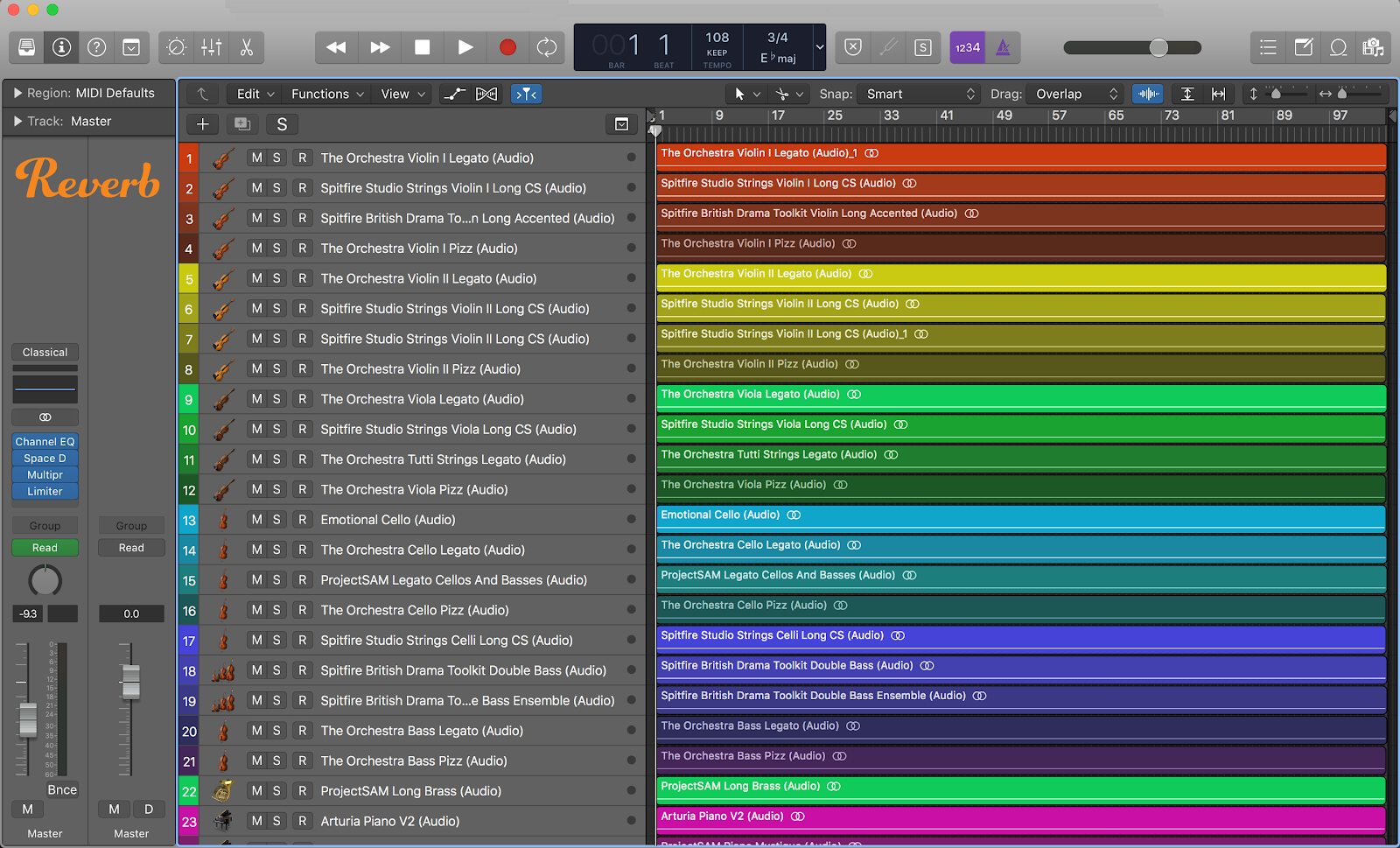
Featuring products from Germany, France, England, The Netherlands, and The United States, this international offering imbues even more sonic character than the original score calls for. The additional polyphonic paint in this colorful palette extends the harmonic context even further, with effective overtones of emotive timbre that lend well to the the original work's orchestrations.
For the Chopin-style melancholy string orchestrations, I gave up to four voices per string part. The libraries of Best Service's The Orchestra, Best Service Emotional Cello, ProjectSAM Orchestral Essentials, Spitfire British Drama Toolkit, and Spitfire's latest new powerhouse of a production tool, the Spitfire Studio Strings Professional Collection, were all combined for maximum sonics.
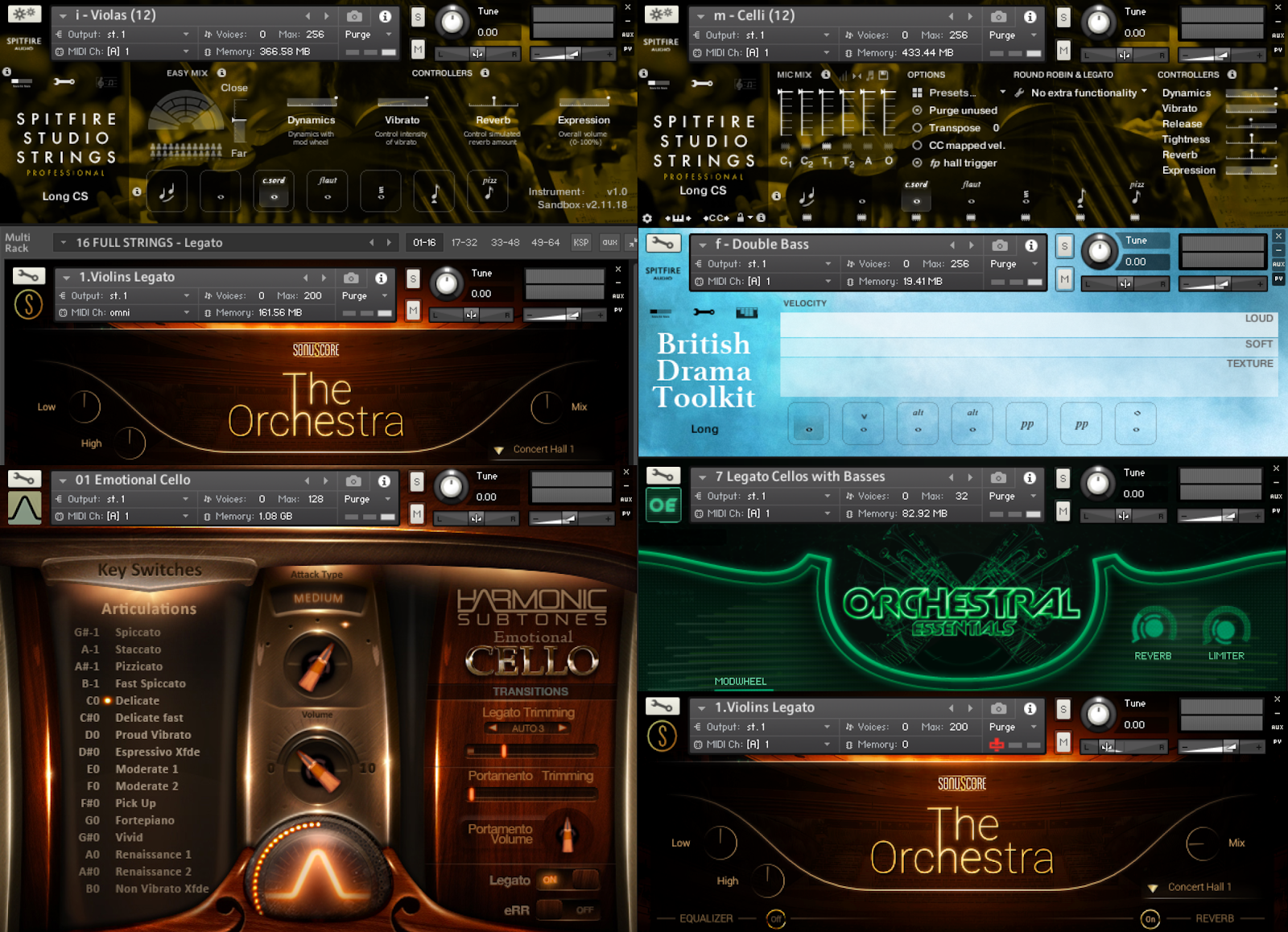
Orchestrating a low legato brass patch from the cinematically focused ProjectSAM Orchestral Essentials collection, the only last and major consideration was the star of the show, the piano.
Earlier this year, I profiled one of my favorites, the highly effective and sonically brilliant Fazioli F228 emulation in the Waves Grand Rhapsody Piano, but I don't feel that sound is bright enough for a cavernous concert grand sound. However, it's perfect for warm dark textures, synonymous of Jazz and electronic music, as illustrated by "Jazz Lounge | Reverb Exclusive Demo."
This piano sound had to be a larger-than-life concert grand with a massive space about it, but also haunting and ominous, harnessing an ambivalent contrasting quality. I resolved to combine two seperate piano emulations from companies based in France and Holland.
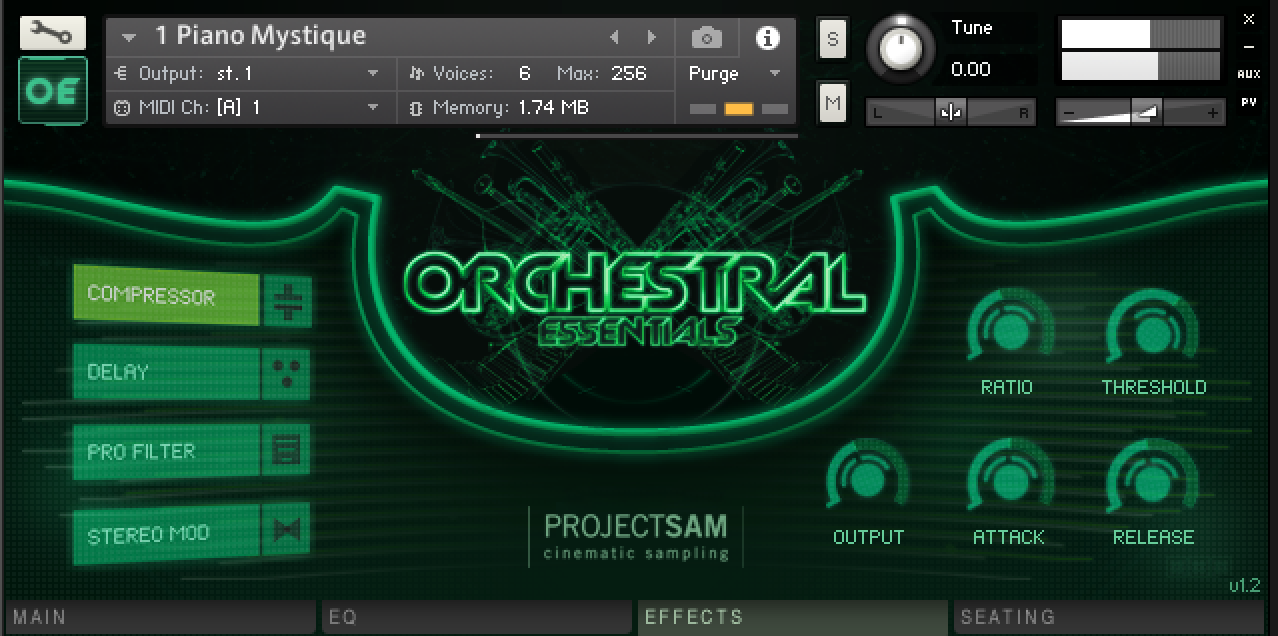
ProjectSAM was founded by Dutch media composers looking for better sounds and compositional solutions The dystopian-leaning sound design tools in their Orchestral Essentials collection are capable of creating sonic drama that would cost me a small fortune to get from other libraries.
One such patch is the lamenting uncertainty of their Piano Mystique acoustic piano sound. It's a useful, haunting take on the standard piano sounds most are used to. I use this sound often on my film music projects. It paired perfectly with this preset I created for a piano emulation from the French outfit, Arturia.
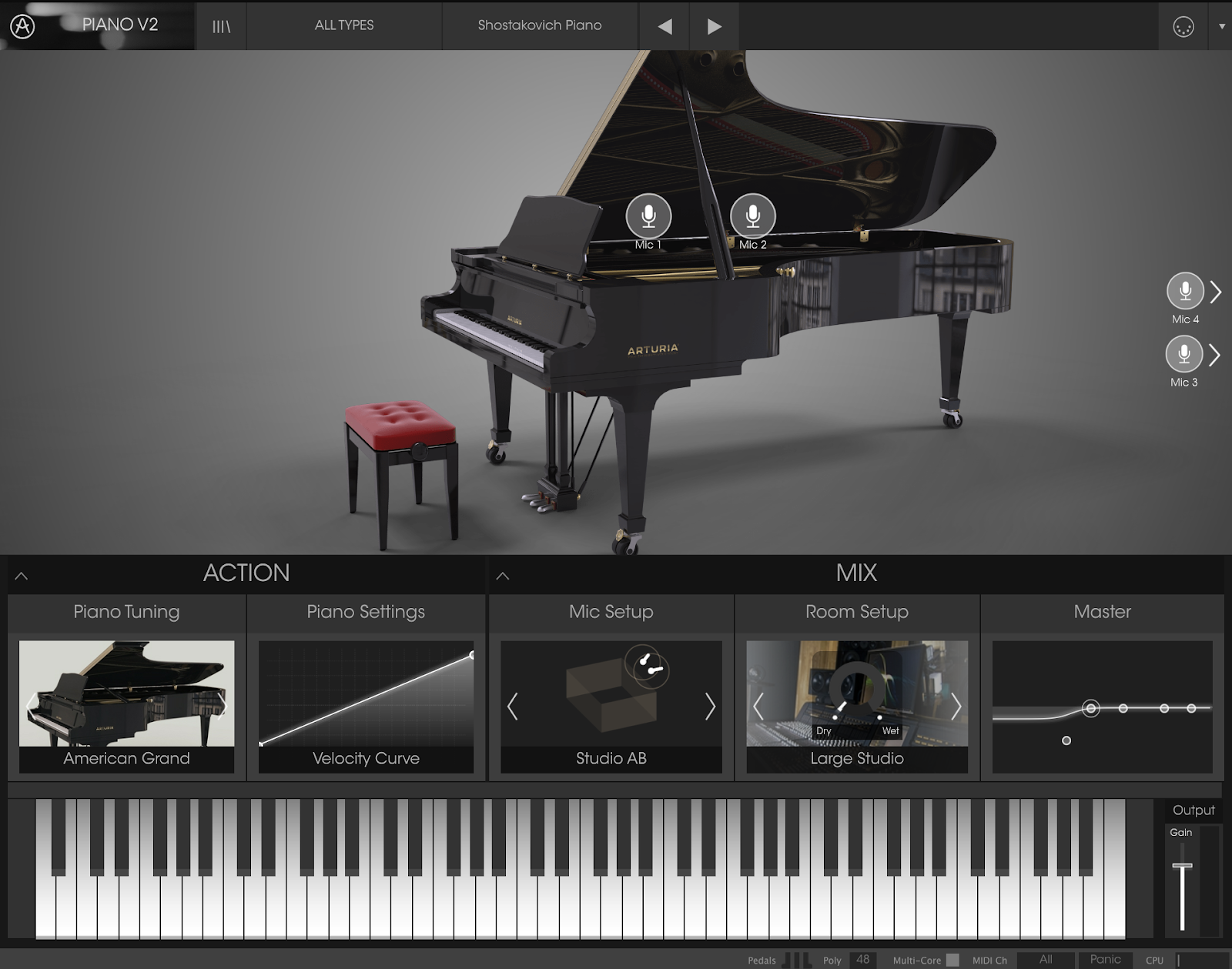
This patch I created, pictured above is titled Shostakovich Piano, and it's available for free in the presets link below. The patch is for the newly updated Arturia Piano V2 from their software suite, the Arturia V Collection 6. This one is designed for direct pairing support with the previously mentioned ProjectSAM Piano Mystique. The Piano V2 allows for on the fly changes—mix placements, EQ, reverb, echo, and more—for maximum piano sound design needs.
The last piece of this sound design puzzle was to create congruent and overlapping spaces around these instruments. Constructing eerie, unnaturally long reverb tails was an easy task with the sonic dexitery of the Eventide 2016 Stereo Room Reverb.

Check out the audio demo of the final composition below, grab the free presets, and purchase the Logic X Sessions to dive deeper into this masterpiece.


